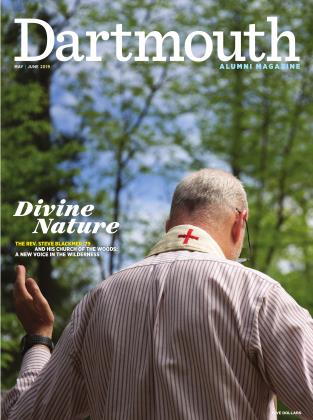EUREKA!
notebook
CAMPUS
NEW FINDINGS AND RESEARCH
Circle of Life Death scent lures hermit crabs.
Land-dwelling hermit crabs are drawn to the stench of their own dead, reports biology professor Mark Laidre in Ecology and Evolution. Laidre and coauthor Leah Valdes ’18 placed 20 plastic bottles filled with torn bits of hermit crab flesh on a beach in the Osa Peninsula of Costa Rica. Within minutes, dozens of hermit crabs swarmed around the containers. “It’s almost like they were celebrating a funeral,” says Laidre. The macabre behavior is an evolutionary adaptation for hermit crabs, which rely on finding and occupying larger shells to grow. The smell of torn flesh indicates a fellow hermit crab may have been killed, leaving behind an empty shell for the taking. “Death, by releasing resources, can thus be a starting point for new life,” writes Laidre.
“False Hopes”
Big Pharma spends big bucks on ads.
Annual spending on healthcare advertising in the United States nearly doubled between 1997 and 2016 to $30 billion, according to a study in the Journal of the American Medical Association coauthored by Dr. Steven Woloshin, DMS’96, and Dr. Lisa Schwartz, DMS’96, of the Dartmouth Institute. Their analysis found that direct-to-consumer advertising—specifically, television commercials for prescription drugs— accounted for the greatest increase in medical marketing. These types of ads, the authors note, are illegal everywhere except in New Zealand and the United States, where healthcare spending topped $3.3 trillion, or 18 percent of GDP, in 2016. “While marketing may have positive effects like destigmatizing diseases or embarrassing symptoms, it can also raise false hopes by exaggerating treatment effects. This can lead to overdiagnosis, overtreatment, and wasted resources,” says Woloshin. “It’s a big part of why healthcare is so expensive.”
 View Full Issue
View Full Issue
More From This Issue
-
 COVER STORY
COVER STORYNature Worship
MAY | JUNE 2019 By jim collins ’84 -
 FEATURE
FEATUREIdeal Exposure
MAY | JUNE 2019 By STEVE GLEYDURA -
 FEATURE
FEATUREThe Future of Money
MAY | JUNE 2019 By GEORGE M. SPENCER -
 notebook
notebookUphill
MAY | JUNE 2019 By CATHERINE ROCCHI ’19 -
 notebook
notebookBehind Enemy Lines
MAY | JUNE 2019 By GEORGE M. SPENCER -
 notebook
notebookWords of Wisdom
MAY | JUNE 2019
Notebook
-
 notebook
notebookEUREKA!
MAY | JUNE 2017 -
 notebook
notebookBalancing Act
JULY | AUGUST 2017 -
 notebook
notebookBY THE NUMBERS
JANUARY | FEBRUARY 2020 -
 notebook
notebookA New Reality
NOVEMBER | DECEMBER 2020 -
 notebook
notebookTHE FUTURE: "This Is My Vision”
NOVEMBER | DECEMBER 2023 -
 notebook
notebookStriking Objects
SEPTEMBER | OCTOBER 2018 By Annie Phifer ’20

